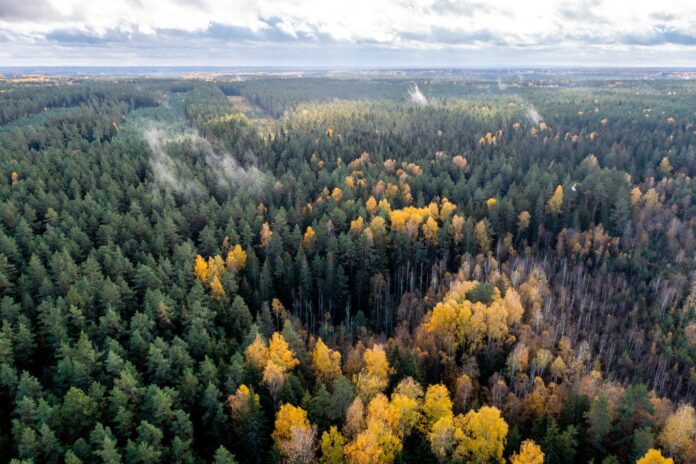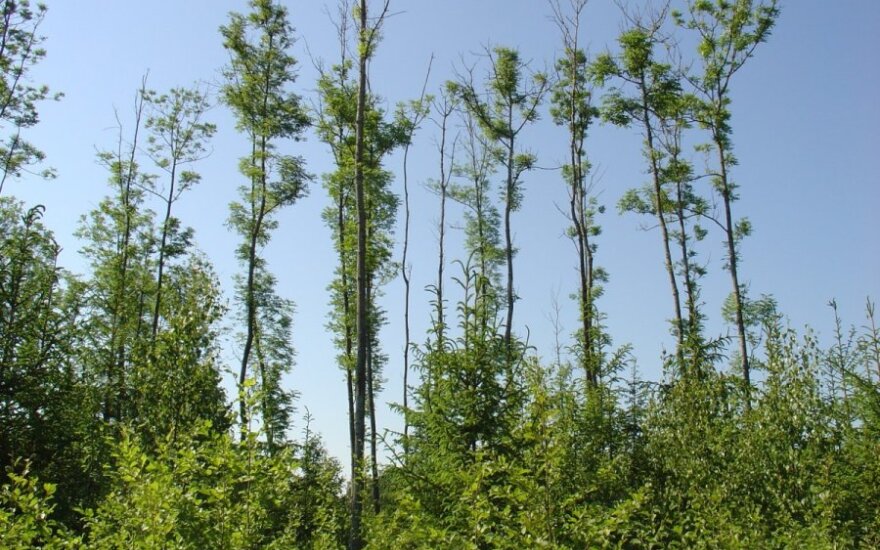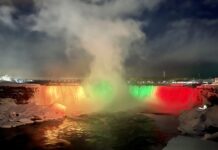
A recent article on the website LRT.lt looks at changes occurring in Lithuania’s environment due to climate change. As we know, global warming causes changes in nature to happen much more quickly. This is also being noticed in Lithuania.
Nature photographer Marius Čepulis notes that about 40 years ago there were about 300 known bird species, and now Lithuania has 404 or 405. “…some of them just visit [Lithuania], but there are already some that live here permanently, even though we had no idea that they could live here,” he says. The number of new species of insects are still being studied. In earlier decades, the closest jackals lived in the Ukrainian steppes, and now may be breeding in Lithuania.
 Climate and nature in Europe has undergone drastic changes before. It is estimated that seven centuries ago, the average temperature in Lithuania was as much as four degrees higher than today. Tomas Čelkis, a historian at Vilnius University (VU) explains that there was more humidity, warmer winters, hotter summers, and the vegetation changed accordingly, with more deciduous forests flourishing. But beginning in the 1300s, drastic climate changes began to take place across Europe. The average temperature dropped by up to one degree every year. At the time, the Teutonic knights who organized crusades to the Grand Duchy of Lithuania, complained about being forced to fight not only Lithuanian pagans but also the freezing temperatures. There were some winters when snow was waist-high, and some years when it was so cold that people could not go outside because they would freeze their limbs, nose, or ears instantly, according to Čelkis.
Climate and nature in Europe has undergone drastic changes before. It is estimated that seven centuries ago, the average temperature in Lithuania was as much as four degrees higher than today. Tomas Čelkis, a historian at Vilnius University (VU) explains that there was more humidity, warmer winters, hotter summers, and the vegetation changed accordingly, with more deciduous forests flourishing. But beginning in the 1300s, drastic climate changes began to take place across Europe. The average temperature dropped by up to one degree every year. At the time, the Teutonic knights who organized crusades to the Grand Duchy of Lithuania, complained about being forced to fight not only Lithuanian pagans but also the freezing temperatures. There were some winters when snow was waist-high, and some years when it was so cold that people could not go outside because they would freeze their limbs, nose, or ears instantly, according to Čelkis.
Both people and nature had to adapt to unexpected climate changes. For example, the Baltic Sea used to freeze over in the 15-16th centuries. And when the sea freezes, so does the land and the forests, and herbivorous animals can no longer reach their food deep beneath the snow.“There are even documented cases of wolf packs coming from the Scandinavian peninsula across the frozen Baltic Sea to Lithuania in search of food,” he adds.
This period, known as the Little Ice Age, lasted several hundred years until around 1850, changing Lithuanian climate and nature. Today, however, the climate changes that are already taking place are expected to happen much more quickly. It is predicted that in a few decades, the climate in the Baltic region will be similar to that prevailing in central Europe today.
As Lithuania’s climate changes, some plant species will inevitably become extinct. Some animals will also start migrating as the climate becomes unfavourable to them. “Species that are used to a particular temperature start to leave when the environment is no longer suitable for them, and they migrate to cooler areas. This is how certain animals, bacteria, fungi, lichens, plants, beetles, and all kinds of organisms migrate,” explains Mantas Antanas Davidavičius, of Vytautas Magnus University.
The gaps in Lithuanian nature will be occupied by new species of plants and animals arriving from abroad, a process already underway. Praying mantis can now overwinter and reproduce in Lithuania. Another species introduced because of climate change is the wasp spider, a predator that feeds on other spiders, has a very specific web and a body resembling a wasp.
The effects of climate change on nature are also exacerbated by humans. People used to bring invasive plant species to Lithuania that can now spread more easily because of the warming climate. There are also animals that come with humans, which, earlier, could not adapt to the new climate because it was too cold. Now, because of the warming climate, they can adapt and survive here.
Climate change disrupts nature’s clock, which makes it more difficult for plants and animals to know when winter ends and spring begins. Žymantas Morkvėnas, head of the Baltic Environment Forum, notes that bird migration calendars are changing as the climate becomes milder. Birds come back earlier, but other parts of the ecosystem, such as the development cycle of insects, do not necessarily change at the same rate. “So, birds come back, but the insects that they feed on are not yet there, and it can lead to the loss of certain species,” he says.
Lithuanian trees are also at risk. For example, the spread of the fungus that causes ash trees to turn dry has been linked to climate change. “The spruce’s habitat is moving to the north due to climate change and increased droughts. Spruce needs soil that is sufficiently moist. It is also more susceptible to various parasites. We are seeing these trends and they are only increasing. In the future, we will probably have no spruce trees and no spruce forests,” warns Morkvėnas.
The spruce and pine forests are not only a symbol of Lithuanian nature but also an important resource for the timber industry. Thus, the changing nature might become not only an aesthetic but also an economic problem.
“Nature can cope with the worst disasters. It is very flexible, driven by a survival mechanism. […] Climate change teaches us a similar lesson – nature will adapt to it in one way or another. The question is whether we, humans, will be able to successfully adapt to climate change”, says climatologist Gintarė Klimienė.
PHOTO: Forest in Winter – Wikimedia Commons
E-letter text: Climate Change in Lithuania





























